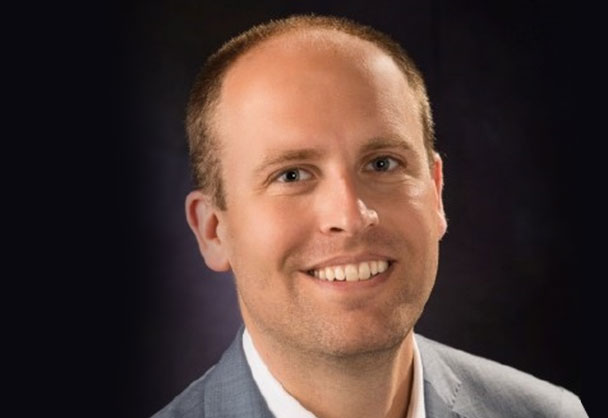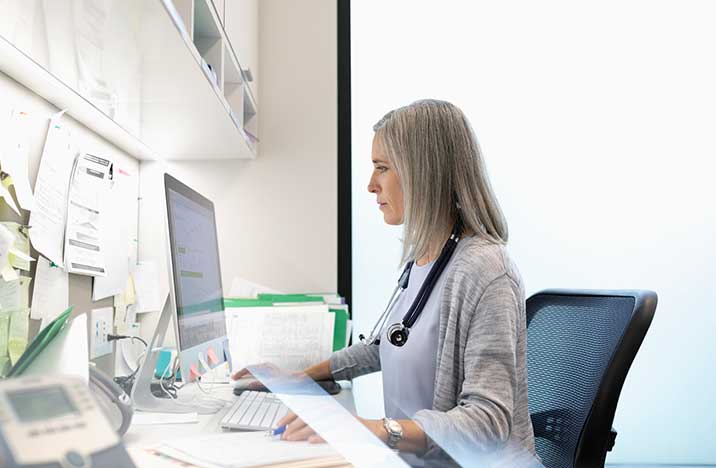Texas Children’s Hospital Leverages Technology and Automation for Medication Management
Podcast Episode 21
Introduction
As a leader in innovation within healthcare, Texas Children's Hospital (TCH) consistently seeks ways to leverage technology and automation to support efficient medication management for its mother-baby and pediatric populations. Seeking intelligent medication management solutions, TCH selected an as-a-service offering that combined an automated dispensing system with expert services to optimize their central pharmacy operations. Learn from industry experts how pharmacy automation and an intelligent infrastructure transform medication management to support better care and outcomes for mother-baby, pediatric, and patient populations.

Jeff Wagner
Vice President, Pharmacy, Respiratory Care, and Extracorporeal Membrane Oxygenation (ECMO) Services

Gee Mathen
Director, Pharmacy Clinical Applications, Technical Services, Texas Children's Hospital
Episode Highlights
Q: Please tell our audience about your pharmacy background and experience leading key areas in pharmacy and respiratory care at Texas Children's Hospital.
Jeff Wagner: I oversee our pharmacy, respiratory care, and ECMO services across Texas Children's Hospital. Texas Children's has three hospitals in the greater Houston area with nearly 900 licensed beds. According to the U.S. News and World Report, the system consistently ranks among the top children's hospitals in the United States. Across the enterprise, we have close to 5 million patient encounters and 35,000 inpatient admissions annually, especially for our pharmacy operations and a team of over 600. We rely on automation and advanced technology to support safe and efficient medication use processes and provide care to our community's children and women. As an innovative leader, Texas Children's has sought the most advanced technology available, including automated medication dispensing systems and robotics to interface directly with automated dispensing cabinets.
Q: Can you please tell us more about how you use pharmacy technology and automation at Texas Children’s?
Gee Mathen: We can track every node within our environment within the visibility piece. So, this is the first step into a multi-layered process as we move forward. Our goal is to track individual doses from all seven stages of the medication management process, from procurement, storage, ordering, dispensing, administration, monitoring, and reporting. So, all of these pieces start with automation, and technology is a crucial component. The software aligns it as well to integrate the systems. I think that’s key to the success we’re trying to drive here.
Q: Can you tell us more about your role and how Texas Children’s has used automation to transform your pharmacy to benefit your patients?
Gee Mathen: My role here is the fun part. I get to put in the technology and ensure that we accomplish the vision and dreams that Texas Children's have set forth before us. We're a leading pediatric hospital, and super excited that we're number two this year in the U.S. News and World Report. We want to keep our patients safe, especially when the lives of children, mothers, and babies are at stake.
We chose a central pharmacy dispensing service, an automated central pharmacy system, and robotics to gain all the benefits, including increased medication safety through 100 percent barcode scanning, heightened inventory visibility, decreased redundant tasks, and reduced medication waste.
Texas Children's was already using automated dispensing cabinets to dispense about 1.3 million doses annually. Before we adopted the extra two automated central pharmacy systems from Omnicell, the hospital used a different solution to restock cabinets. The solution caused medication waste, was error-prone, and excessively relied on pharmacy personnel for manual labor and inconsistent practices. With the substantial use of automated dispensing cabinets, we needed to simplify the patient-specific dispensing process of the new automated central pharmacy system to improve the ADC restocking procedure to drive visibility and efficiency in drug dispensing throughout our healthcare system.
Q: Recognizing the difficulties in previous restocking workflows, what solution did you identify and implement?
Jeff Wagner: We partnered with our medication management technology partner to employ the automated central pharmacy system to fit our institution's specific requirements by dispensing patient-specific and cabinet restock medications to address the problems with previous restocking processes.
Q: How did you prepare to deploy the pioneering workflow at your hospital?
Gee Mathen: Over two years ago, Texas Children's and Omnicell collaborated on the automated central pharmacy system and robotics, which was improved to restock ADCs. Jeff and I had the privilege of going and taking a look at this in the early inception stages. When we saw it, we said, hey, our future will be different. It was a light bulb moment. Our pharmacy informatics teams ran several tests to ensure a smooth transition. When we finally moved forward with our new robots. They developed a workflow to restock the ADCs from the automated central pharmacy system. We also had interdepartmental cooperation amongst the executives, pharmacy informatics team, pharmacy inventory team, and other participants. They were all essential to the workflow's success.
Q: When and where did you begin the new workflow? And can you walk our listeners through a typical day of that workflow?
Gee Mathen: The cabinets are organized by the areas they service. The automated central pharmacy system is notified each morning via automated restock notifications for the cabinet groups. It creates medication bags with one cabinet's worth of drugs in each and then processes requests for those cabinets one group at a time. Medication bags are dispensed and sorted into bins for each cabinet. Once the bin's contents have been transferred, they are scanned using an in-house barcode program to confirm that they go into the right cabinet.
Q: Can you please describe the following steps and areas of the workflow?
Jeff Wagner: The XR2 dispenses medications and groups by the automated dispensing cabinet. The pharmacy inventory technicians use these bar-coded cabinet bags to restock each ADC with the required amount of medication. Pharmacy technicians then scan the medication barcodes to double-check the accuracy of transferring the medications from the bag to the ADC bin. An in-house dashboard keeps track of progress in real-time all day long. And we analyze this data from each process step to identify opportunities to improve the process and its safety and efficiency.
Q: It sounds like automation and the central pharmacy that fills cabinets have made a big difference for Texas Children’s. What benefits could our listeners experience in their health systems and pharmacies?
Gee Mathen: Industry-wide doses dispensed from cabinets grew from approximately 25 percent to over 75 percent from 2002 to 2020. There are now more cabinet-filling workflows in hospitals driven by automation and robotics. Other advantages to central filling are safety scanning and verification and the efficiency of pulling medications from a single location instead of all over the pharmacy.
Q: What automation solution exists now that is different from the past?
Jeff Wagner: After 30 years of manual and inefficient processes to fill cabinets, we now have access to automated central pharmacy systems. Some of the ones we have in use at Texas Children's provide the efficiency and safety necessary to distribute medications to patient care areas in larger quantities. The central pharmacy dispensing service and associated processes ensure our pharmacy automated robotics run at the highest level throughout the technologies lifecycle. The automated central pharmacy system offers many benefits when handling cabinet filling. It supports picking larger sizes and weights that accommodate cards and strips of doses, as well as boxes of vials. The system does not require repackaging medications by supporting manufacture, and packaging, including 90 percent of non-IV form factors. And when we remove the need for repackaging, we remove a step that creates an opportunity for human error, further supporting a safe environment.
DISCLAIMER
The Future of Pharmacy Podcast is produced and distributed by Pharmacy Podcast Network. The views and opinions expressed in this podcast are those of the authors and do not necessarily reflect the official policy or position of any other agency, organization, employer or company. Assumptions made in the analysis are not reflective of the position of any entity other than the author(s). These views are always subject to change, revision, and rethinking at any time and may not be held in perpetuity.
 Back to Podcast
Back to Podcast

